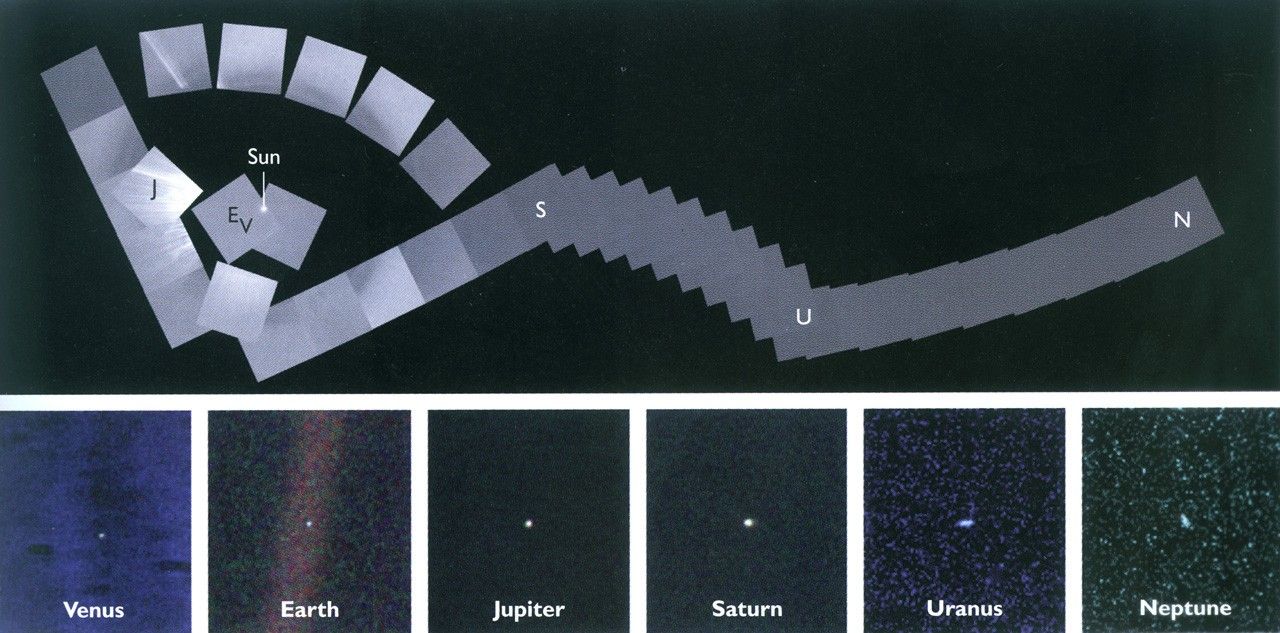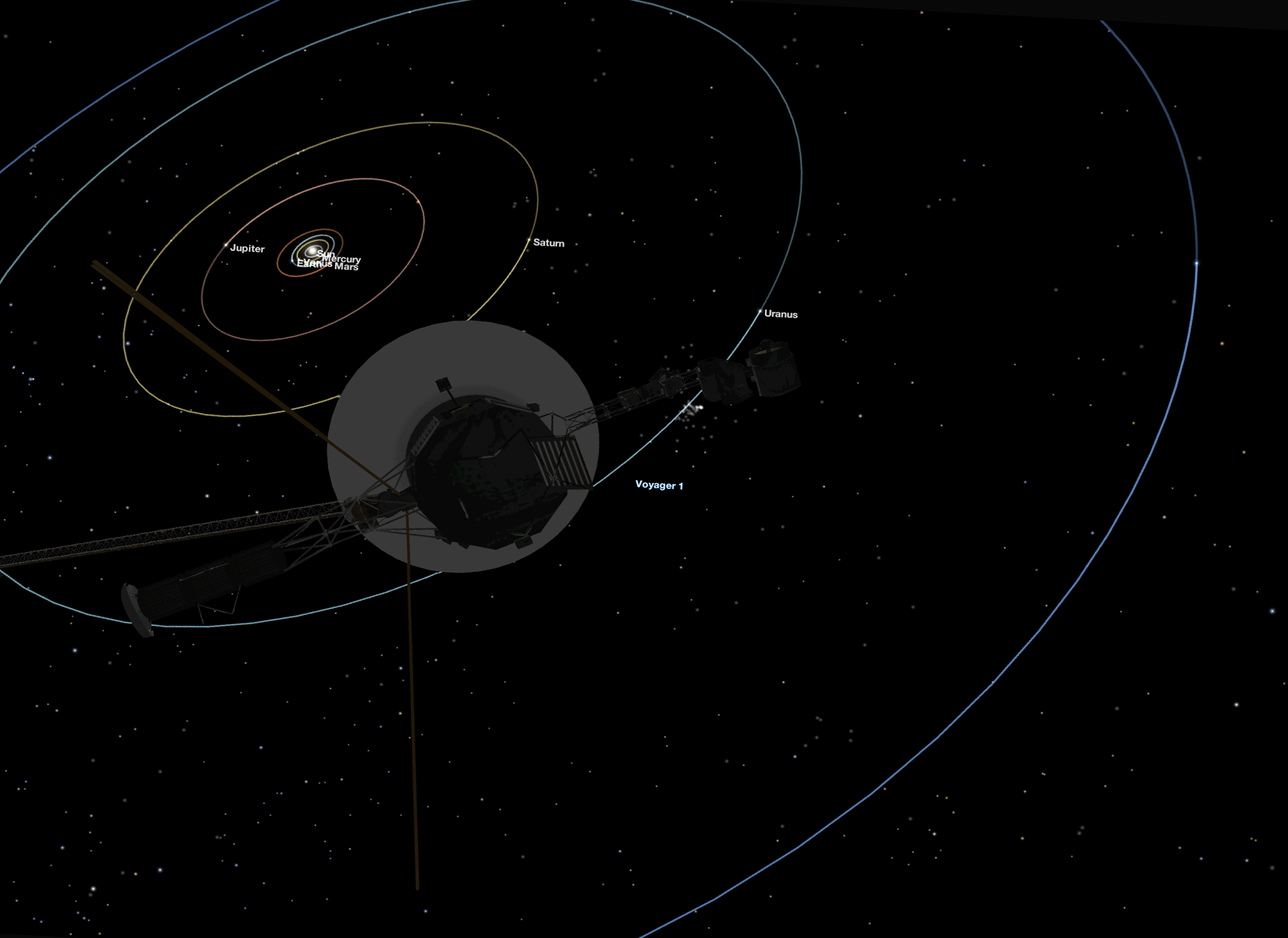First-Ever Solar System Family Portrait (1990)
| Credit | NASA/Jet Propulsion Laboratory-Caltech |
|---|---|
| Historical Date | February 14, 1990 |
| PIA Number | PIA00451 |
| Language |
|
The Solar System "family portrait" is the final series of 60 images captured by NASA's Voyager 1 that show six of our solar system's planets. It remains the first and only time — so far — a spacecraft has attempted to photograph our home solar system. Only three spacecraft have been capable of making such an observation from such a distance: Voyager 1, Voyager 2 and New Horizons.
The Family Portrait
In February 1990, Voyager 1 was speeding out of the solar system — beyond Neptune and about 3.7 billion miles (6 billion kilometers) from the Sun — when mission managers commanded it to look back toward home for a final time. It snapped a series of 60 images that were used to create the first “family portrait” of our solar system.
The image series contatains the famous image that would become known as the Pale Blue Dot, revealing Earth was a tiny dot within a scattered ray of sunlight. Voyager 1 was so far away that — from its vantage point — Earth was a crescent about a pixel.
In addition to Earth, Voyager 1 captured images of Neptune, Uranus, Saturn, Jupiter, and Venus. Mars was obscured by scattered sunlight bouncing around in the camera and Mercury was too close to the Sun, and dwarf planet Pluto was too tiny, too far away, and too dark to be detected.
The images gave humans an awe-inspiring and unprecedented view of their home world and its neighbors. Like Earth, each planet appears as just a speck of light (Uranus and Neptune appear elongated due to spacecraft motion during their 15-second camera exposures).
"The family portrait is a symbol what NASA exploration is really about: Seeing our world in a new and bigger way," Dr. Thomas H. Zurbuchen, Associate Administrator of NASA's Science Mission Directorate, said in 2018.
The family portrait remains the first and only time a spacecraft has attempted to photograph our home solar system. Only three spacecraft have been capable of making such an observation from such a distance: Voyager 1, Voyager 2 and New Horizons.
About the Photographer
Voyager 1 was launched Sept. 5, 1977, just days after its twin — Voyager 2 — on Aug. 20. Because it was on a faster route to the mission's first encounter, at Jupiter, Voyager 1 overtook Voyager 2 on Dec. 15, 1977. (This was the reason for the order of their naming.)
Voyager 1 flew past Jupiter on March 5, 1979, and Saturn on Nov. 12, 1980.
After snapping the Pale Blue Dot and other “family photos,” at 05:22 GMT, Feb. 14, 1990, Voyager 1 powered off its cameras forever. Mission planners wanted to save its energy for the long journey ahead.
In August 2012, Voyager 1 entered interstellar space. It’s now the most distant human-made object ever.































